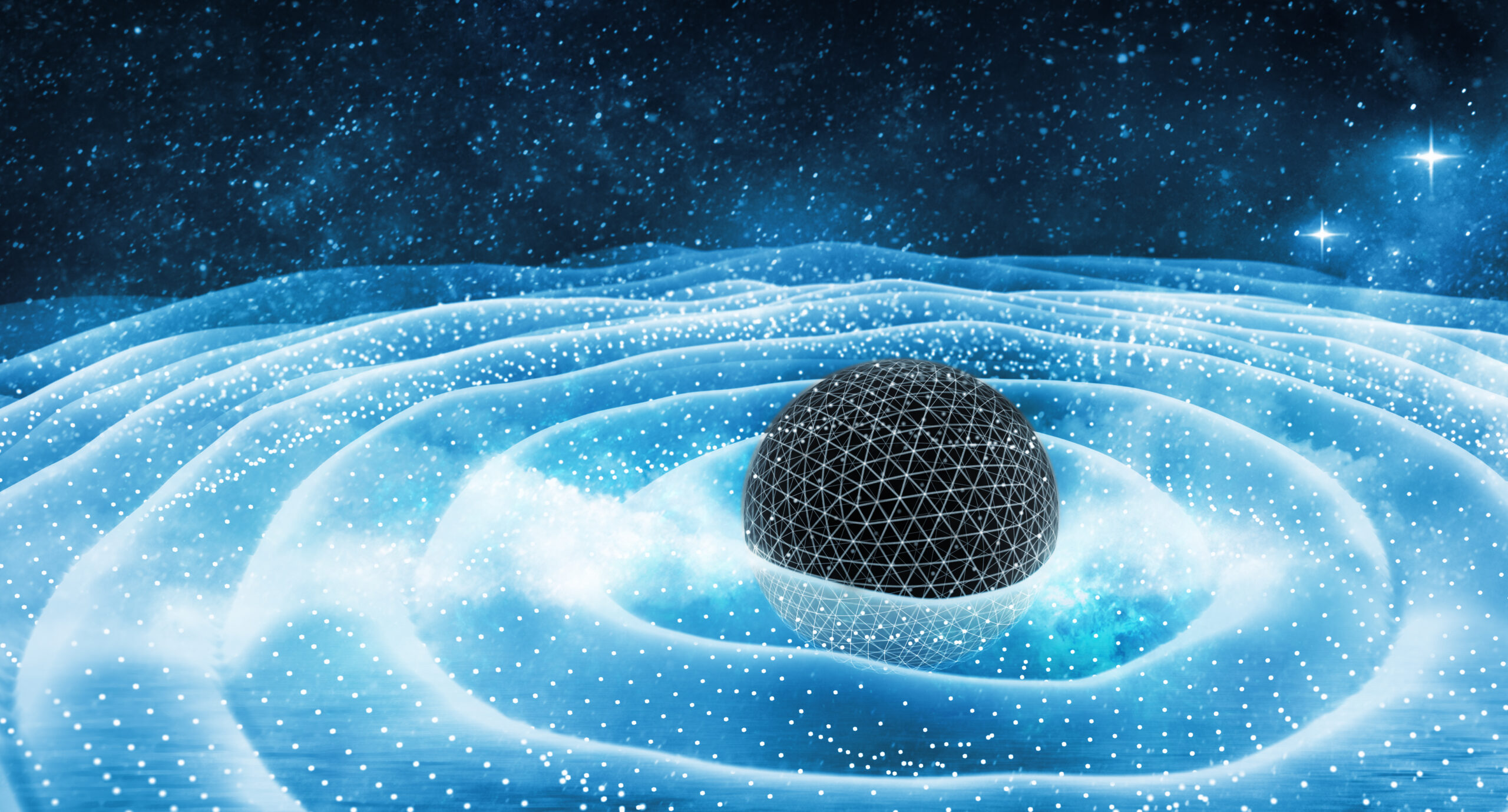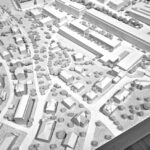A New Study Suggests We Might Be Sitting Inside a Huge Cosmic Void and That Could Solve One of the Biggest Puzzles in Cosmology.

For nearly a century, astronomers have measured the expansion of our universe – but something strange is happening in our cosmic neighborhood. Recent observations reveal a troubling discrepancy: the space around us appears to be expanding faster than the rest of the universe.
This anomaly, known as the Hubble Tension, has challenged our fundamental understanding of cosmology. Now, scientists are investigating a remarkable possibility – that we might be living inside a vast cosmic void, a billion-light-year-wide region of unusual emptiness that distorts our view of the expanding cosmos.
If true, this would mean our entire galaxy resides in one of the universe’s most exceptional regions, forcing us to reconsider not just our place in the cosmos, but potentially the very laws governing its expansion. As new telescopes prepare to map the universe’s structure with unprecedented precision, we may be on the verge of solving one of astronomy’s greatest puzzles – and the answer might lie in the extraordinary emptiness surrounding us.
The Universe Isn’t Expanding Like We Thought—And That’s a Problem

In the world of cosmology, precision matters. Scientists rely on extremely sensitive instruments to measure the expansion rate of the universe, a value known as the Hubble constant. But there’s been a growing rift between two measurements of this number. One is based on light from the early universe—observed through the cosmic microwave background—and the other comes from more recent observations of supernovae and galaxies close to us. The problem? These two values don’t match up. This discrepancy, often called the “Hubble tension,” isn’t a small rounding error—it’s significant enough to suggest we may be missing something fundamental in our understanding of the universe.
For years, researchers tried to reconcile the difference by tweaking models or introducing new forms of exotic matter or energy. Some proposed adjustments to dark energy or entirely new physics to patch the gap. But the truth is, these solutions often felt like forcing puzzle pieces that don’t quite fit.
And despite the advancements in observational tools and calculations, the tension has only grown more stubborn with time. The precision of measurements has increased, but so has the gap between them—raising serious questions about what might be distorting our view of the cosmos.
That brings us to a bold new possibility: what if our local measurements are off because we’re taking them from a very unusual location? Specifically, what if we’re living inside a giant cosmic void—a massive underdense region in the universe? It’s a simple but powerful idea that could help explain why nearby galaxies appear to be moving away from us faster than expected. Instead of rewriting the laws of physics, this theory suggests we might just need to reconsider our position in space. After all, perspective changes everything.
What It Means to Be in a Void

A cosmic void isn’t a black hole or a vacuum in the horror-movie sense. It’s a vast region of space that contains much less matter—galaxies, stars, gas—than average. These voids can stretch across hundreds of millions of light-years and still play by the same gravitational rules as the rest of the universe. Think of them as the universe’s open plains, in contrast to the dense “cities” of galaxy clusters. The idea that we could be inside one of these regions may sound far-fetched, but researchers have been studying voids for decades. What’s new is the scale being proposed here—this void wouldn’t be small. It could span over a billion light-years in diameter.
If we are in such a void, that could change how we interpret the motion of galaxies around us. Imagine watching a balloon expand from the inside of a deflated pocket. Everything around you would appear to be moving away faster than it actually is, simply because your vantage point is skewed by the local lack of resistance.
In a similar way, living inside a cosmic void would make galaxies look like they’re accelerating more quickly than they are in reality. This means the local expansion rate would appear higher compared to measurements from the early universe, which are not affected by our unique cosmic neighborhood.
This theory has gained traction thanks to new models that better account for how light travels through such underdense regions. The key shift isn’t about introducing new forms of matter or altering gravity itself—it’s about acknowledging that where we are in the universe can affect what we see. This doesn’t break the laws of physics; it adds nuance. And if the void model holds up, it could resolve one of the most persistent tensions in cosmology with a single, elegant shift in perspective.
The Science Behind the Claim

At the heart of this new proposal is the work of physicist Lucas Lombriser from the University of Geneva, who approached the Hubble tension through a fresh lens—one grounded in quantum gravity. Instead of relying solely on General Relativity, Lombriser explored what happens when you incorporate quantum corrections into gravity on large scales. His framework still respects Einstein’s equations but introduces subtle shifts that become noticeable over cosmic distances. These shifts allow for an evolving vacuum energy—a concept that behaves like dark energy but doesn’t require fine-tuned constants or speculative fields.
What’s striking about this approach is that it doesn’t depend on wildly speculative particles or mysterious forces. Instead, it focuses on how we calculate the gravitational influence of mass and energy when space itself is warped differently in underdense regions.

In this revised model, our location in a giant void naturally emerges as a viable solution to the Hubble tension. It’s not a loophole—it’s a reinterpretation of the equations in light of the possibility that space isn’t perfectly homogeneous everywhere. This localized distortion changes how light and time behave, which in turn changes our measurements of cosmic expansion.
This theory aligns well with observed anomalies in large-scale structure data, too. While we’ve long assumed that the universe is “smooth” on large scales, that assumption may have been premature. The evidence doesn’t rule out the existence of a void like the one described—it may even favor it. And that opens a fascinating door. If our cosmic address really is skewing our sense of how fast the universe is growing, then we’ve been living inside an illusion—one shaped not by bad data, but by a profound misunderstanding of our context.
A Cosmic Perspective Check

Humanity has a long history of mistaking its vantage point for the whole picture. We once believed the Earth was the center of the universe, then the sun, then the galaxy. Each step forward required us to challenge what felt intuitive—to ask whether we were projecting importance onto our location simply because we were standing there. The idea that we might be living in a cosmic void is another chapter in that same story. It’s not that the universe is conspiring to mislead us—it’s that we’re still learning how to see clearly from where we are.
This shift in understanding doesn’t diminish us. If anything, it reinforces the wonder of discovery. To consider that the universe is more textured and layered than we thought—that our corner of it might be unusually empty—doesn’t make our place insignificant. It makes our understanding more accurate. It’s a reminder that science doesn’t move in straight lines. It expands and contracts, just like the universe it studies, revealing deeper truths the more we’re willing to let go of assumptions.
There’s also a deeper metaphor here. Just as we may be living in a cosmic void, many of us walk through internal voids—spaces within where clarity feels out of reach. But being in a void doesn’t mean being lost. It means there’s room for reflection, for questions, for a different kind of sight. Sometimes what seems like emptiness is simply the absence of what we expected, not the absence of meaning. The universe continues to challenge us not just with its vastness, but with the invitation to understand that vastness more truthfully.
Why This Matters for Us (Even Here on Earth)

It’s easy to think of cosmology as something detached from daily life—a realm of telescopes, equations, and galaxies far, far away. But the questions it raises often circle back to something deeply human: how do we make sense of our place in the grand scheme of things? The possibility that we’re living in a void sounds abstract, but at its core, it’s a story about perception. About realizing that what we see—and how we interpret what we see—is always influenced by where we’re standing. That’s true in science, and it’s just as true in life.
This idea resonates on a psychological level. Think about how often we mistake our own limited experience for the full truth. When things feel wrong—when our world feels like it’s moving too fast, or too slow—it might not be us that’s broken. Maybe it’s our frame of reference. This theory invites us to slow down and reconsider our assumptions, both cosmic and personal. It reminds us that being in an unfamiliar or underwhelming space doesn’t mean the story is over. It might just mean we’re seeing things from the inside out.
Science has a way of shaking us out of certainty and into wonder. And sometimes, that’s the best thing it can do. Whether or not we’re truly in a cosmic void, the search for answers pulls us into a bigger conversation—one about curiosity, humility, and the ever-evolving nature of truth. We don’t have to be at the center of the universe to find meaning. Sometimes, standing at the edge of understanding is where the most growth happens.
Featured Image Source: Shutterstock
Loading...






